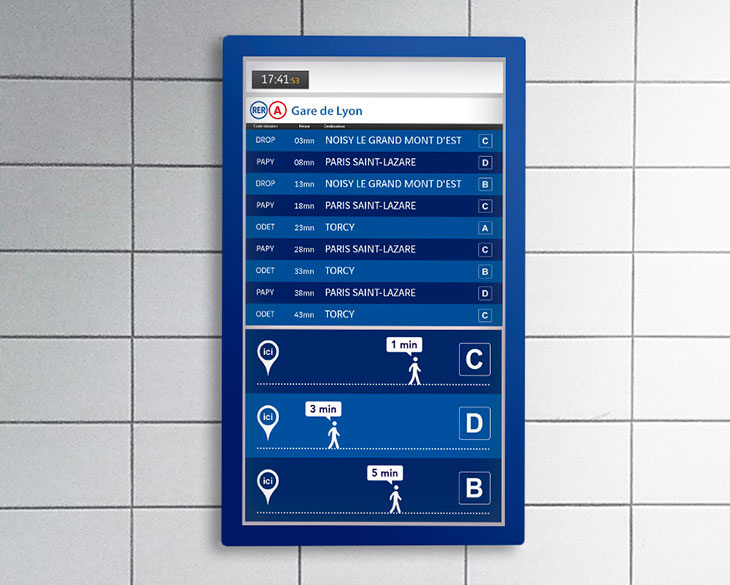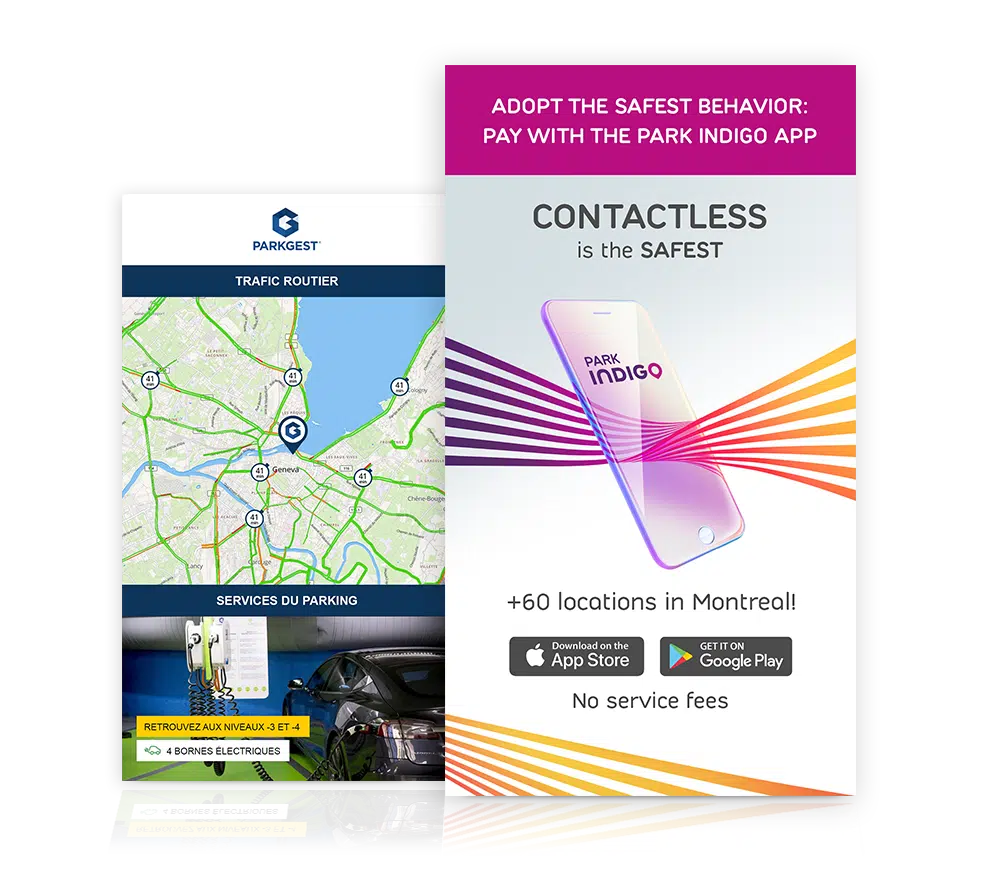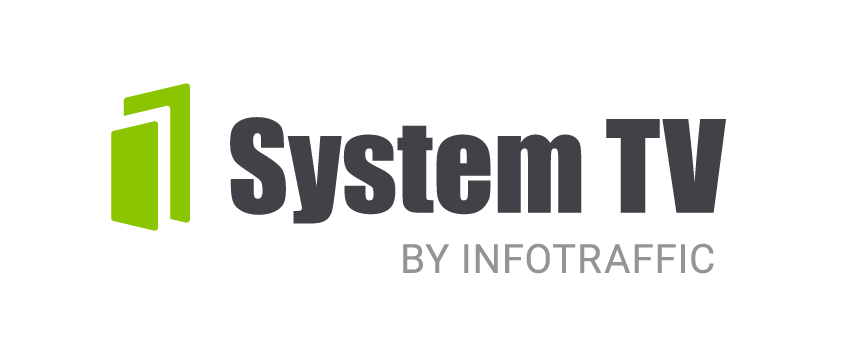Digital signage is a powerful, dynamic tool that helps businesses capture attention in today’s world. Using LCD or LED screens and advanced media players, it delivers vibrant and engaging content to consumers. From electronic signs to 3D billboards, digital signage offers a wide range of possibilities for businesses, particularly in the parking industry. Let’s explore the world of digital signage and how it’s working in 2024.
What is Digital Signage ?
Digital signage is a super effective way to communicate, using digital screens to display all kinds of content – whether it’s info, text messages, videos, or images. It makes it really easy to stream content from different sources straight onto a screen. Basically, digital signage is all about using electronic displays to show content.
What makes digital signage stand out from traditional displays is that you can update and schedule content remotely. This makes it a flexible tool for industries like parking, retail, food services, hospitality, and more. The content is managed through a digital signage cloud server or a digital signage software, which lets you create interactive, dynamic, or even static experiences. You can control everything from a hosted web environment and broadcast to one or many screens worldwide.
Evolution of Electronic Signs
The evolution of electronic signs has come a long way, thanks to advancements in tech and changing consumer habits. What used to be static, traditional signage has now turned into dynamic digital displays that really take advantage of modern technology.
We’ve moved from simple LED signs to high-tech digital signage systems that offer HD visuals, interactive features, and real-time updates. Back in the early 2000s, only early adopters were using this tech, but as hardware and software prices dropped over time, digital signage became much more affordable for a lot of businesses, even in industries like parking.
One big breakthrough in digital signage was the introduction of interactive displays. Touchscreens now let users interact with the content, boosting engagement and making the overall experience more immersive.
Newer display tech like OLED and MicroLED has also made a big difference, offering sharper resolution, brighter screens, and thinner designs. This has improved the visual impact of digital signs and opened up more ways to use them in different environments.
Components of a Digital Signage System
What’s the Role of Media Players in Digital Signage?
Media players are basically the backbone of a digital signage system, making it possible to display and manage content. They can be either physical devices or software that processes and shows content on a screen. These players connect to the display through HDMI cables or can even be built into the screen itself.
Most media players are network-enabled, so you can update content remotely from one central location. This means you can control everything from the content management system (CMS), process it, and have it show up on the screen.
Media players can handle all kinds of content, like image files, videos, animations, and text. Depending on how complex your digital signage setup is, you might need different types of media players. For example, a player like the System TV player can handle pretty much any type of content you throw at it.
Content Management with a Digital Signage Software
Digital signage software is key when it comes to managing content, acting as the bridge for displaying, organizing, and controlling digital media. At the core of this software is the Content Management System (CMS), which makes it easy to upload, design, and arrange content. The CMS can handle all kinds of media, from text and images to videos and animations. Software like the System TV App can even handle specific content like real-time traffic updates, transit info, news, weather, and more.
Users can either create or upload content into the CMS. Once it’s there, the content gets organized and designed using the CMS’s built-in tools, which help you create layouts that reflect your brand and make the content look engaging and visually appealing.
Besides organizing content, the CMS also allows you to schedule it and monitor its performance. This ensures the content displayed is not only relevant but also effective.
A huge plus is the ability to manage everything remotely, letting you broadcast messages to one or multiple screens, no matter where they are. This is especially helpful for large organizations or businesses with several display locations.
Whether you choose a cloud-based or on-premise CMS depends on your company’s needs and resources – each option has its own pros and cons. Reach out to us if you need help choosing the right fit for your business.
The CMS also lets you check for connectivity issues, playback problems, and overall system reliability. This means you can monitor your digital signage screens remotely, ensuring your content plays smoothly and has the intended impact on your audience.
Digital Signage Hardware
The hardware aspect of a digital signage system plays a pivotal role in its functionality. This includes devices such as display screens, media players, and the necessary connectivity options for content delivery.
The display screens can be LCD panels, LED screens or video walls. These are the primary visual output devices that exhibit the digital content.
Additionally, kiosks, enclosures and mounts are important as they affect the durability and aesthetic appeal of the system.
The Importance of Network Connectivity
Network connectivity is a big deal for digital signage systems. It lets you manage and update content remotely in real-time, no matter where your screens are located. This is especially handy for larger companies or businesses with multiple display sites.
There are a few ways a digital signage system can connect to a network: you’ve got Ethernet for wired connections, Wi-Fi for wireless, and even cellular for remote access. Each one has its own pros and cons. For instance, Ethernet is more stable, while Wi-Fi gives you more flexibility with digital signage installation. The best choice really depends on what your digital signage system needs.
Network connectivity is also super important for troubleshooting and making sure everything runs smoothly. It allows you to monitor your screens remotely, ensuring content plays without a hitch and always hits the mark with your audience.
Bottom line : digital signage systems depend heavily on strong network connections to work properly, so having a solid and reliable internet connection is key for managing and displaying your content efficiently.

How Digital Signage Works
The Process of Displaying Content
When it comes to showing content on screens, this is where digital signage really does its thing. The content, which is set up in the CMS, gets sent to the media player to be processed. The media player acts like a translator, taking the content from the CMS, processing it, and telling the screen what to display.
This can happen in different ways, like:
- Displaying static images or text
- Playing videos or animations
- Showing real-time data, like news, weather updates, or traffic reports
- Offering interactive content where users can engage
Screen orientation and resolution are important here. The content needs to be tailored to fit the screen’s layout (landscape or portrait) and resolution to make sure it looks as good as possible.
Displaying content isn’t a one-time deal. It runs in a continuous loop and can be updated or changed remotely in real time, thanks to network connectivity.
How to Manage Content on Digital Signs ?
In digital signage, content is everything. It’s what grabs people’s attention, shares info, and gets them to take action. That’s why managing content well on digital displays is so important.
It all starts with creating the content, which should match the brand’s image and goals. The content can be anything from text and images to videos, animations, live broadcasts, or real-time info like weather, traffic updates, news, and public transit details.
Once the content is ready, it needs to be organized, and that’s where the CMS (Content Management System) comes in. The CMS lets you arrange and design the content, and it also helps schedule when it gets shown so it hits at the right time for the biggest impact.
One of the best parts is being able to manage everything remotely, especially if you’ve got screens in different locations. And keeping an eye on how the content is performing is key, so you can tweak it and make sure it’s working as expected.
Easy Scheduling and Distribution of Content
Scheduling and getting your content out there are key parts of running a digital signage system. They make sure your content stays relevant and timely. With digital signage software or a CMS, you can plan out content ahead of time, schedule when it’ll show up on screens, and automate content changes.
For example, a retail store might run promos during peak shopping hours, while a restaurant could display different menus for breakfast, lunch, and dinner. The trick is to schedule content strategically, hitting the right audience at the right time to grab their attention.
Content distribution, on the other hand, is about deciding which screens will display your content. This could be one screen in a single location or multiple screens across different places. Managing this well is super important to make sure your message gets to the right people.
To make things easier, businesses can set up automated scheduling, which cuts down on manual work and keeps things running smoothly. For example, a parking lot’s digital signage could automatically show upcoming events, like Halloween or year-end celebrations, at the right time on specific screens.
In short, good content scheduling and distribution are key to getting the most out of your digital signage and hitting your marketing and communication goals.
Interactive digital signage : engaging audiences like never before
The digital signage industry is really leaning into interactivity to boost customer engagement. Traditionally, digital signage was a one-way communication tool that just displayed content. But now, the industry is shifting toward interactive digital signage.
These systems now use touchscreens, sensors, voice commands, and other interactive features to create more immersive experiences. This kind of interactivity not only grabs attention but also gets the audience involved, turning passive viewers into active participants.
Interactive digital signage works in all sorts of settings. In healthcare, for example, it can help patients access health info, schedule appointments, find their way around, and give feedback. For businesses, interactive signage creates a two-way communication channel with customers, leading to better engagement. In public places like malls, interactive directories help people find stores and services, making the experience more convenient.
On top of that, these systems can collect valuable customer data, allowing businesses to offer personalized experiences, which boosts customer satisfaction and strengthens brand loyalty. Combining digital signage with the Internet of Things (IoT) also offers big advantages, like higher productivity, cost savings, and data-driven insights, all while improving user engagement.
The role of digital signage in shaping the future of advertising
Advertising with Digital Signs
Advertising with digital signs is a fun and engaging way to showcase products or services. Using eye-catching content like images, videos, or animations on digital screens, you can easily update content quickly and at a lower cost, which helps expand your reach and impact.
Digital signage strategies are all about grabbing attention and creating memorable experiences that boost brand awareness. For example, brands can set up interactive displays that resonate with their audience, making the brand stick in their minds and giving people something to talk about.
Digital signs are also great for promoting limited-time offers or sales, adding a sense of urgency and encouraging customers to act fast.
Plus, digital signage gives you a platform for creative, innovative campaigns. Think 3D billboards or interactive displays that blend tech and art, leaving a lasting impression on anyone who sees them.
That said, it’s important to keep your signage easy to read and visually clear. Using the right font size and sharp images makes a big difference in making sure your message gets across.
Finally, setting clear goals for your digital signage campaign is key. These goals will guide your content creation and help you measure the success of the campaign.
Dynamic Content in Advertising
Dynamic content in advertising is all about content that changes based on set conditions or data insights. This lets your company show more targeted, personalized messages, which makes the customer experience better.
One of the most common uses of dynamic content involves sensors, cameras, or facial recognition tech. These tools can pick up on things like the audience’s age or gender and adjust the content to match.
Another cool aspect of dynamic content is real-time updates. By adding things like news, social media posts, transit info, or even weather and traffic updates, businesses can keep their content fresh and relevant.
Dynamic content is also great for measuring audience reactions. By rotating different types of content and tracking responses, businesses can gather valuable data on what works best for their audience.
In the end, dynamic content gives digital signage more flexibility and interactivity, making it an awesome tool for capturing and engaging audiences.
The Impact of 3D Billboards on Advertising
The rise of 3D billboards has totally changed the game in advertising. These billboards use advanced tech to create lifelike visuals, giving viewers an immersive experience. They’re not just eye-catching—3D billboards can actually make a big difference in sales. In fact, they’ve been shown to boost sales by an impressive 107%, compared to 54% for regular static ads.
With dynamic and interactive content, 3D billboards engage people in ways traditional ones just can’t. Plus, using digital signage software is key for managing everything—from scheduling to content playback on these displays.
When it comes to sustainability, 3D digital billboards are actually greener than conventional ones. They combine high-tech design, art, and visual effects to create an experience that really draws people in.
It’s clear that 3D billboards are making waves in advertising, and more businesses are starting to realize their potential.

The benefits of digital signage for businesses
Creating memorable experiences with Digital Signage
Digital signage has become a game-changer for boosting customer experience in all kinds of industries. It offers a fun and interactive way to connect with customers by providing personalized and dynamic content. Businesses can use it to share info, promotions, or entertainment in a way that keeps people engaged.
Take digital menu boards in restaurants, for example. They not only give customers up-to-date info on products but also cut down wait times, which makes for happier customers. In retail, digital signage can highlight product features or show customer reviews, helping people make better buying decisions.
Interactive digital signage is also on the rise. Touchscreen displays let customers engage directly with content, offering personalized messages and a more unique shopping experience.
Digital signage can also be super helpful in large places like parking lots, where it can be tied to LPR cameras, or in hospitals as digital wayfinders to guide visitors.
Overall, digital signage brings huge benefits to customer experience, and using it effectively can really help businesses grow.
Digital Signage for Business Promotion
When it comes to promoting your business, digital signage is incredibly effective. It’s a dynamic platform that helps you showcase your products or services and connect with your audience in a more personalized way.
You can use it to highlight special deals, new product launches, or even customer testimonials, all while boosting your brand’s visibility and recognition. Plus, those eye-catching visuals and strong calls to action can really drive sales by influencing customer behavior and encouraging impulse buys.
Digital signage is also a great way to leverage social proof. By displaying user-generated content like customer reviews or social media posts, you can build trust and credibility with your audience. It strengthens customer relationships and gets more people talking about your brand.
On top of that, digital signage can elevate the in-store experience with interactive elements. Think touch-screen kiosks that offer product details, assist with comparisons, or even let customers try out virtual demos. It’s an effective way to boost engagement and satisfaction.
In short, digital signage is a versatile and engaging tool for promoting your business, increasing brand awareness, customer engagement, and driving growth.
Improving Internal Communication with Digital Signage
Digital signage is quickly becoming a go-to for improving internal communication in companies. By putting up info on digital screens around the office, businesses can make sure everyone stays in the loop and feels connected.
It’s also a great way to build a sense of community by showcasing employee achievements, birthdays, or company events, which boosts morale. Plus, it’s super handy for HR to share important updates or policies with the whole team.
You can even connect digital signage with tools like Slack or your intranet, making it easy to share department-specific info and ensure nothing important slips through the cracks.
All in all, a well-set-up digital signage system can seriously improve internal communication, making the workplace more productive and in tune.


